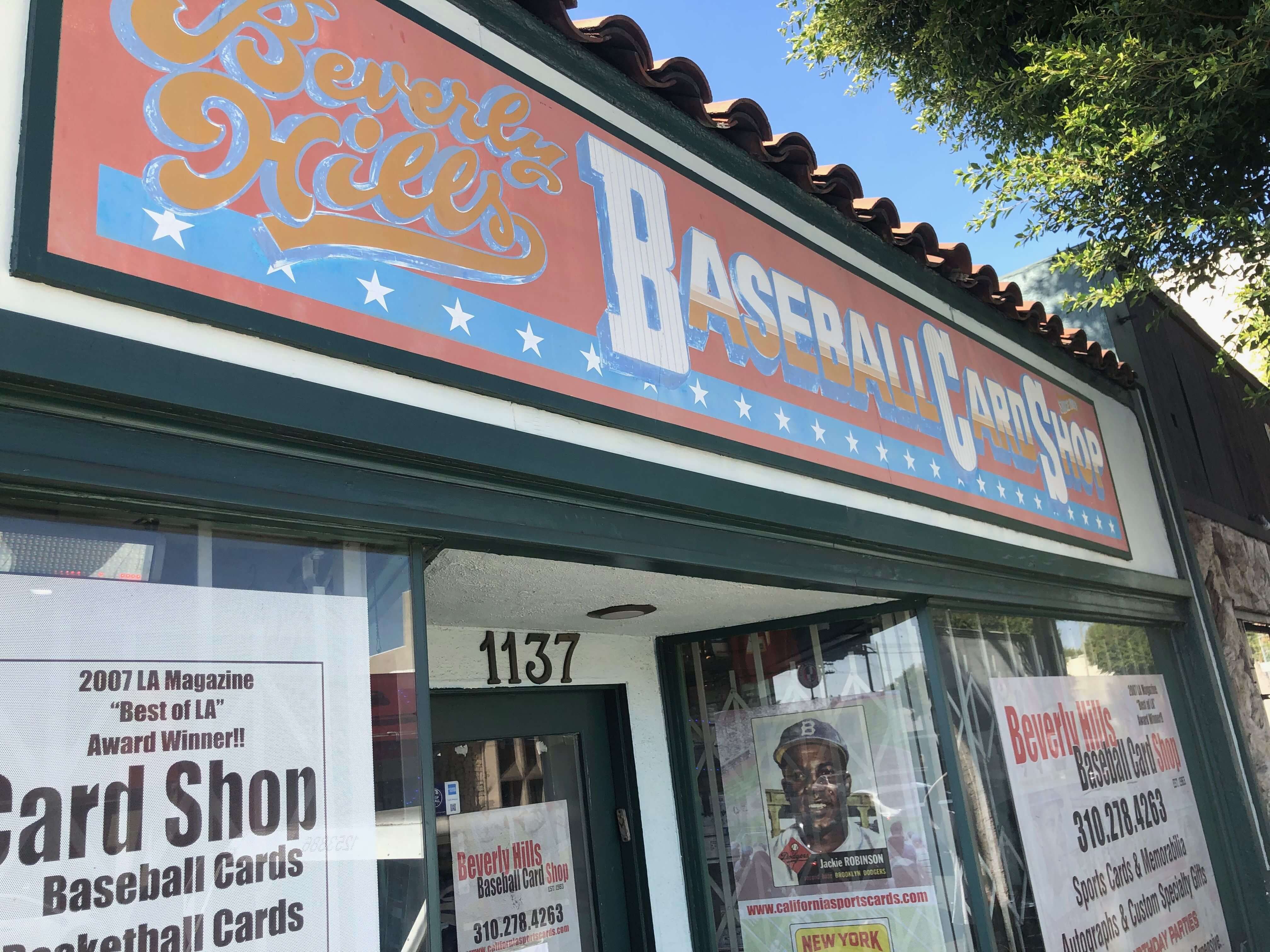Local shop teaches kids and adults far more than how to invest (or gamble) on an MVP’s hobby cards.
It’s Tuesday morning and it’s beautiful as always on Robertson near Pico Boulevard. The Beverly Hills Baseball Card Shop doesn’t open for another five minutes but the Fed Ex driver doesn’t care. He rings the buzzer and is allowed in.
Soon a customer, an out-of-towner, comes in search of a box of this year’s basketball cards. Meanwhile, an employee wearing a Vin Scully T-shirt and a Dodgers cap alerts the boss he’s going to puke if he doesn’t go home. He’s sick, he leaves. The phones are ringing. There are emails to respond to. And lurking near the crates of 30-year-old unopened baseball cards is your reporter, waiting for the chance to pick Matt Federgreen’s brain.
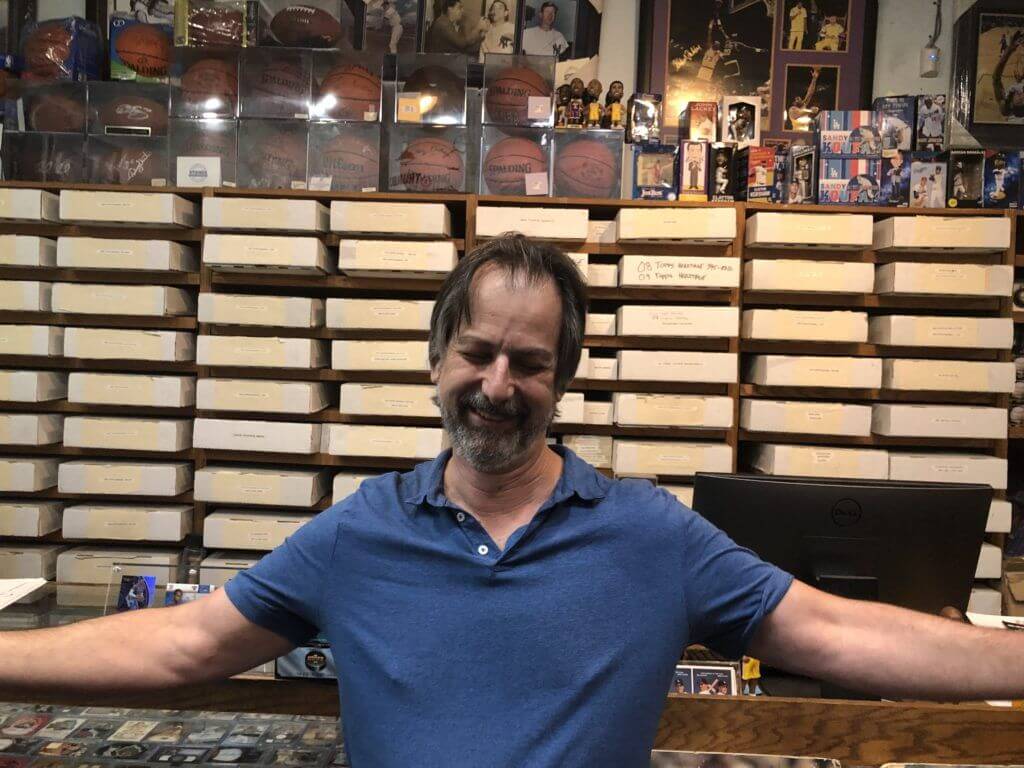
For 37 years, Federgreen has seen the ups and downs of the card collecting business, and right now he says we are in the third peak of his career.
Why in this digital age are trading cards, of all things, flying off the shelves? Federgreen can thank a slew of young rookie phenoms, as well as excellent marketing by the card companies. Toss in eBay, whose marketplace acts as a virtual stock market of sorts that fuels speculation and plants seeds into people’s heads like, “If I can pull one of these rare cards from a pack, can I make thousands of dollars?”
And finally, there’s YouTube where “breakers” open up hundreds of packs a day revealing that yes, great cards, like Willy Wonka’s golden tickets, are there for the taking. All of it adding up for great business, even for one of the last brick-and-mortar card shops in town.
The Current Frenzy of Baseball Card Prices can be Blamed on the Three-Time AL MVP in Anaheim
“I think this actually goes back to Mike Trout,” Federgreen says, referring to the Angels superstar who won the American League Rookie of the Year award in 2012, and yesterday the AL MVP award for the third time in his career. “He laid the groundwork for what’s happening now. A lot of times you don’t see it happening. There was excitement in ’11-’12. There was a build-up. But now, there’s an explosion. There were little earthquakes and now we have The Big One.”
Since he has been a card shop owner, he has seen massive peaks in collecting cards in the late 1980s, late ’90s, early ’00s and now. The difference in this decade, as opposed to others, is that in other eras one or two young stars would emerge. Today, “it’s Trout and 10 others,” Federgreen says.
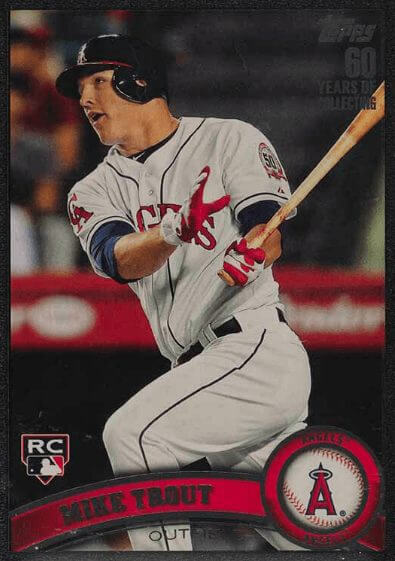
Those others include Bryce Harper, Manny Machado and Anthony Rizzo (also from the rookie class of 2012); Kris Bryant and Carlos Correa from 2015; Cody Bellinger of the Dodgers - who won the NL MVP award on Thursday, and Aaron Judge from 2017; Ronald Acuna Jr., Juan Soto, Walker Buehler, Gleyber Torres, Jack Flaherty and the Angels’ Shohei Ohtani of the class of 2018. This year brought Yordan Alvarez, Vladimir Guerrero Jr., Pete Alonso, Fernando Tatis Jr., Eloy Jiménez and Cavan Biggio.
Federgreen says that now, “the demand is much greater than the supply. So you have all these forces all occurring at the same time” that are pushing up the prices of cards, particularly autographed rookie cards and limited edition numbered or short-print cards.
For example, seven autographed cards from Alvarez, this year’s AL Rookie of the Year, have sold for over $5,000 on eBay since September. Pete Alonso, the NL Rookie of the Year has seen similar highs for his card, with some collectors shelling out over $10,000 for an authorized autographed card in pristine condition.
Some investors don’t even bother with opening up packs of cards. They buy boxes for $20-$100, keep them sealed and don’t touch them until they’ve decided it’s the right time to sell the unopened product. After a few years, they can sell them for three to four times the original price thanks to the lure of the highly desirable rookie cards.
In 2012, an unopened box of Topps baseball cards that could contain either a Trout and/or a Harper rookie card was going for about $70. Trout’s basic card at the time was only going for $3.
“Today, that card is $400,” Federgreen says. Still a bargain compared to the dozens of autographed and rare Trout cards that have been sold for $10,000-$42,000 on eBay recently. (A Tesla Model S goes for about $38,000). That basic card, he says, has increased in value 100 times in just seven years, and the box has also delivered a huge return on investment.
“Even if you didn’t open that box and not get your Trout, you would have made 50 times your money by leaving it sealed,” he said. “The box is worth $3,500.”
Will Zion Williamson do to NBA Cards What Trout did with MLB Packs?
Because everyone is looking for the next $70 box to turn into a $3,500 box, people like that out-of-town customer are looking for “that next Trout,” Federgreen says. In basketball, many speculate it’s No. 1 pick Zion Williamson, the 6′ 6″ 19-year-old who was drafted by New Orleans.
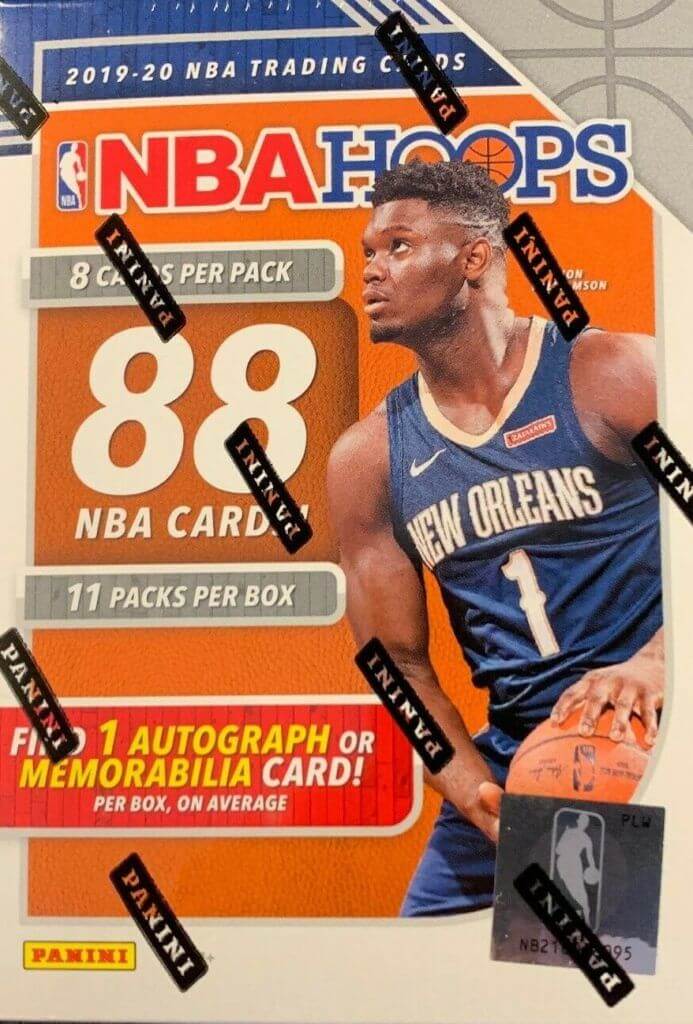
The Beverly Hills Baseball Card Shop does sell basketball cards, autographed balls, as well as NFL and NHL items, so it would behoove Federgreen if Zion did turn out to be the Trout of the NBA, but he doesn’t think it will happen.
“He is a very large man, he’s already shown injuries … Bill Walton might have been the greatest center of all time, but his feet failed him,” Federgreen says. “I know the medical field is different now, but this guy is jumping, doing crazy stuff and he’s 280 pounds. So I don’t know how much his body will be able to take in the long, 82-game season.
“So if you like Zion and want to take a chance on him, just like you would invest in a stock portfolio, don’t put all your eggs in one basket. You’ve gotta buy some stuff that has a safety net attached, along with the risky stuff,” he says, adding that the best investment is keeping boxes unopened with sealed packs.
“I bought a box of 2009-2010 basketball cards because Blake Griffin was gonna be hot. And then he got hurt. So I stuck the box in the backroom and it collected dust,” he says. “And then this other guy came out and started doing really well, his name was Steph Curry. And my junk turned into gold. Not because I bought it for the right guy. Did I know who Steph was when I bought it — no. And more times than not, it’s better to be lucky than good.”
Today’s Card Shop Faces Competition from Individuals Online to Corporate Giants
In the last few years, competition has mutated in ways no one could have predicted. Whereas a number of years ago, small shops had to worry about big box stores like Target and Walmart tapping into their business with not just packs and sets, but specially produced products sold exclusively at those stores, now YouTube has also created a new fad: breakers.
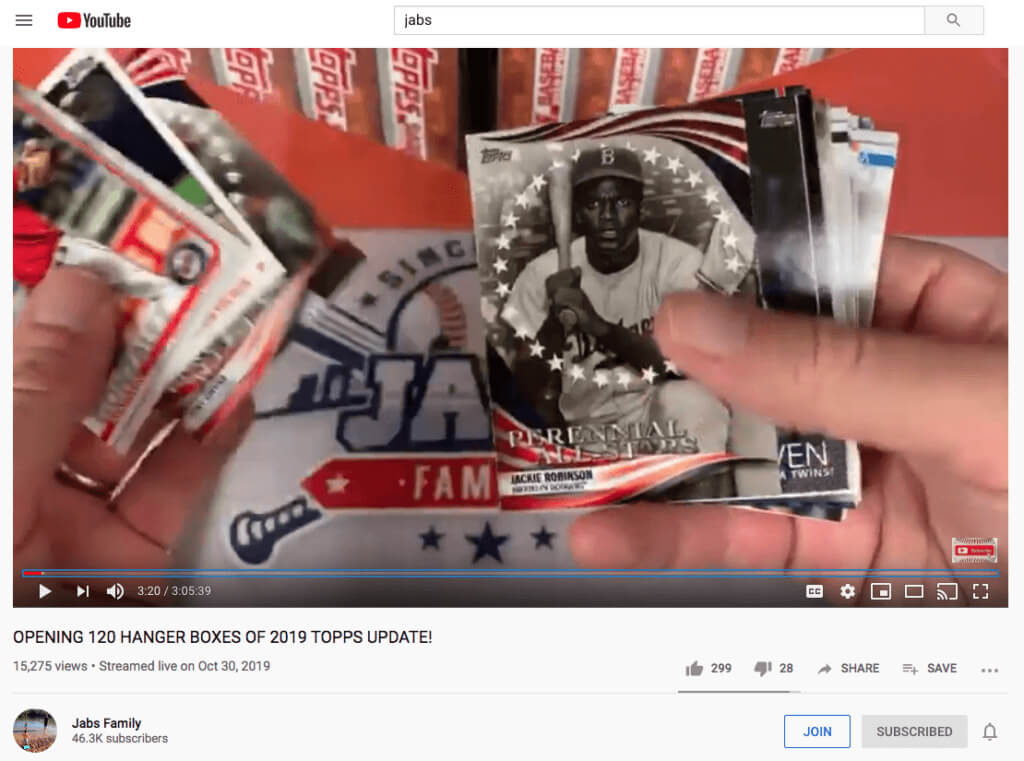
Breakers are people who buy cases of cards and sell smaller lots of the packs to viewers who chip in to accept all the cards that are revealed from their favorite teams. Then, they open the packs on a live YouTube stream. Some of the more popular breakers are able to buy more cases of the newly minted cards than shops like Federgreen’s, but that doesn’t bother him.
“As much competition as there are from other avenues, the competition from [storefronts] is actually decreased,” he says. “There’s very few of us knowledgeable, brick-and-mortar stores with a history and a great selection. We’re a dying breed. So when people come in here from all parts of the country and all parts of L.A., I keep them as customers because they want this experience.”
Has he ever considered being a breaker himself? It would seem like a natural fit. He clearly knows the cards, he has a great personality and decades of experience over the majority of the most popular breakers on YouTube.
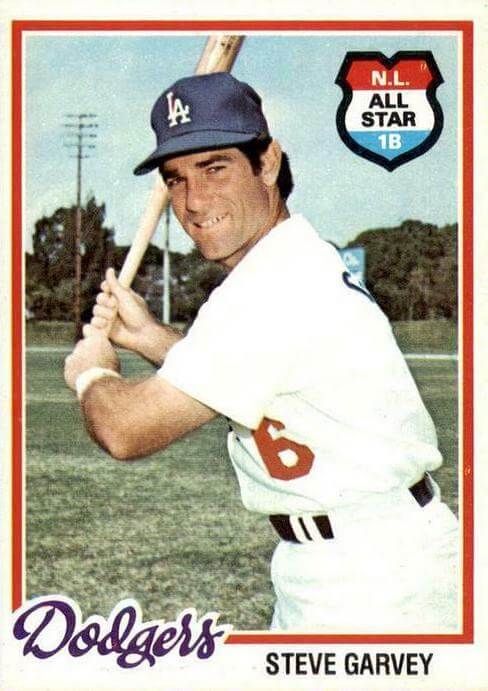
“I make choices sometimes, that are not always financially rewarding, but time is a value to me,” he says, adding that he doesn’t like to promote the gambling side of the hobby.
“We were gambling when we were 10 years old, opening packs,” he says. “I was hoping that when I spent my $5, I would get a Dodger. I didn’t like the Reds or the Giants. It was gambling but it wasn’t a monetary thing. It was a hero value. And I always loved that about it. The chance of getting your hero. Now kids don’t get a card and say, ‘Oh I got a Steve Garvey,’ they say, ‘I got a $200 card.’
“One of my mentors was a gentleman named Max Himmelstein who opened Valley Baseball Card Shop. He was a terrific man,” Federgreen says. “He was a card show dealer in the ’70s and had a good job as a salesman. He quit his job to open up a baseball card shop and everyone thought he was out of his mind. He ended up buying the building the store was in. He passed away and I went to the funeral. What I got at the funeral was an interesting vision of this man. And that his card store was just a small portion of who he was.”
Federgreen only knew the business side of the man, he would visit him, talk shop and occasionally split orders with him. When Himmelstein got ill he offered his shop to Federgreen for “near nothing,” but he declined because even then the idea of a full life that included family and friends was important.
“Don’t get me wrong. I am devoted to this business and it’s a big part of who I am and I’m proud of it,” he says. “But I don’t know if making a little more money and being on the Internet will make me any more happy.”
Doing It for the Kids
A feature that is unique to the Beverly Hills Baseball Card Shop is something Federgreen does for young people. He will assign a child a baseball player to study, and when they come back with a research paper about that player, he will give them store credit.
Some kids like the easy assignments like Babe Ruth or Lou Gehrig. But others choose more obscure players like William Hoy (aka Dummy Hoy), a deaf and mute player from the 1800s who inspired umpires to use the “safe” and “out” signals, among others, so he could understand what had happened.

“What I try to show is that everything has a meaning and there’s a story behind everything,” he says. When he had his own kids and discovered a series of books by Dan Gutman about athletes, Federgreen bought them en masse and loaned them out to children so they could write book reports.
“My hope is that the child is enlightened and excited about this history. Mom and dad never complain about a kid reading,” he says. “And I win because I get, hopefully, an interested, long-term collector who wants to do it for more than just a flavor-of-the-day. And that, to me, is more exciting than selling a box and opening it online, I hate to say. That’s probably why I do what I do and give away free cards and give kids books and I’m not on TV opening packs at night. Instead, I’m reading the book to my son and that’s what I’d rather do.”
Parting Advice for the New or Returning Collector
Federgreen leaves us with these words of wisdom for new collectors, or those of us that gave up childish things but are returning to the hobby thanks to some disposable income.
“Come in, get an education, figure out what your budget is, because this is an endless thing, and if you overspend you’re not going to enjoy it,” he says. “Nobody wants to get in a fight with their spouse because they bought too many baseball cards.”

